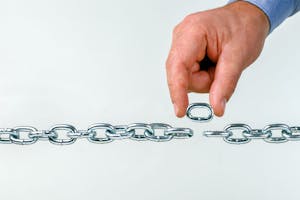- 11 minute read
- Content Marketing
- SEO
- Websites
Understand Your Competition: Conducting SEO Competitor Analysis Is Easier Than You Think
All Skill Levels
Get a behind-the-scenes-look into FareHarbor's 2024 season

If you’ve been working on a link building strategy, you know it takes time to gain quality backlinks to your website. But inevitably, some backlinks will become broken over time, either because the page doesn’t exist anymore, the URL has changed, or there are other technical issues.
SEO professionals often refer to this as “link rot.” Just like those bananas you forgot on your kitchen counter for weeks, if you leave links unattended, they will eventually go bad. This is a common issue across industries.
One study found that 12.2% of e-commerce site backlinks point to a 404 page (WooRank).
This indicates that the browser couldn’t find anything on this page. As time goes on, broken links grow exponentially, which not only creates a poor user experience, but it’s also a missed opportunity to capture potential customers.
Now for the good news: With a proactive broken link strategy, you can not only reclaim your own backlinks but also build new ones to replace your competitors’ broken links. Here’s how.
Link reclamation is the process of finding broken links that should be pointing to your website and fixing them.
While link reclamation focuses on your own backlinks, broken link building is about finding competitors’ broken backlinks and replacing them with your own content. There are two different ways to approach finding broken backlinks.
Target a specific competitor’s broken links: 
Target a website or blog in your niche that you’d like to get backlinks from:
Whether you’re doing one or both of these strategies, you’ll have to reach out to site managers or bloggers to notify them about the broken link and offer a replacement URL. Here’s a simple template to get you started, but be sure to customize each outreach email.
Hi [name],
[Introduce yourself and your business]
I really enjoy your content and especially loved your post on [topic — take this opportunity to talk about specific information or tips from their page or post that you liked.]
I noticed that the link to [insert anchor text for the broken link] goes to a 404 page. I recently wrote a blog post that might be a good replacement: [link to your page].
Let me know if you’d like to link to this resource from your page.
Thanks,
[Your name]
Even though we tend to think of backlinks as a long-term SEO strategy, like most things on the web, you can’t just set it and forget it. Set aside some time once a year (maybe during your least busy season) to revisit your backlink strategy, search for any broken links that need to be addressed, and keep working on gaining new and relevant backlinks. Learn more in our guide to link building outreach.